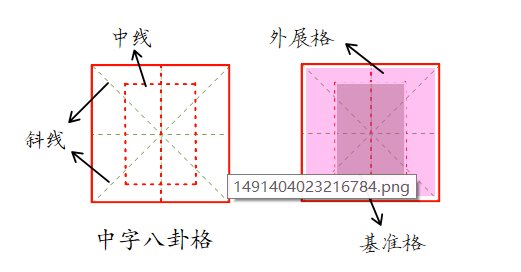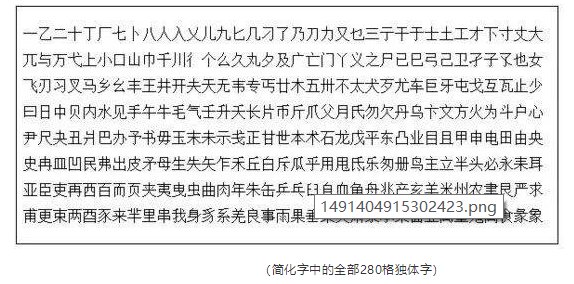The structure of the Chinese Bagua grid is mainly composed of the base grid and the outward grid. Because it is shaped like the character "中" and also resembles "Bagua", it is called the "Chinese Bagua grid". The basic grid mainly carries the center and key positions of the Chinese characters; the external grid Mainly carries the main stroke and stretching part of the man. See the picture below for the Chinese character Bagua grid.

Xu Shen divided Chinese characters into two categories in "Shuowen Jiezi", one category is called "wen" based on pictograms; the other category is called "characters" based on "pictures and sounds". It can be seen that there is a difference between "wen" and "zi". The single type is the text, and the combined type is the character. Regardless of how detailed the distinction is, they are collectively called characters. Therefore, Chinese characters are divided into two categories: single type and combined type.
Single-type characters are directly composed of strokes and cannot be further divided. Most of them are simple pictographic characters and referring characters. Hieroglyphics: sun, moon, mountain, water, cow, sheep, human, etc. Words referring to things: Tian, Li, Shang, Xia, Yi, Er, Jian, Ben, etc. The structural feature is strokes, and the basic grid of the Chinese Bagua grid is very effective for the position and combination of strokes.

Compound characters are Chinese characters composed of two or more parts, mostly ideographic characters and pictophonetic characters. Meaningful words: Wu, Cong, etc. Phonophonetic characters: river, temple, etc. (characters with the same shape next to them are grouped together to form radicals). Combined characters are divided into left-right structure, left-center-right structure; upper-lower structure, upper-middle-lower structure or surrounding structure. No matter what kind of combined characters it is, writing the size, proportion and coordination of each part is the key. The basic grid and expansion grid of the Bagua grid of Chinese characters give a lot to the position, proportion, size of each part and the stability of the center of gravity of the Chinese character. Big help can get twice the result with half the effort.
Therefore, the Chinese character Bagua grid is not only a positioning exercise in teaching, but also an exercise that returns to calligraphy itself. In the Chinese character Bagua grid, the frame structure of Chinese characters can be trained more scientifically and effectively.








